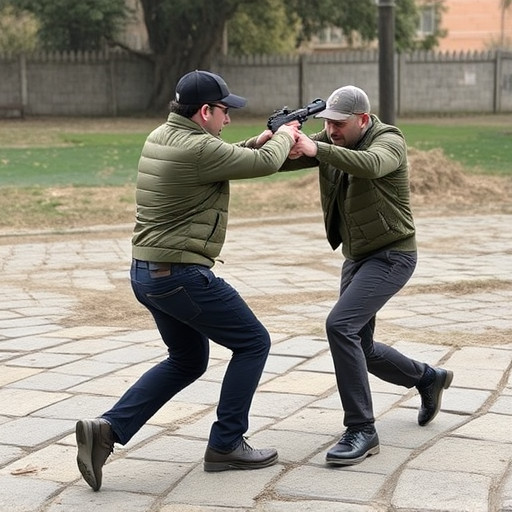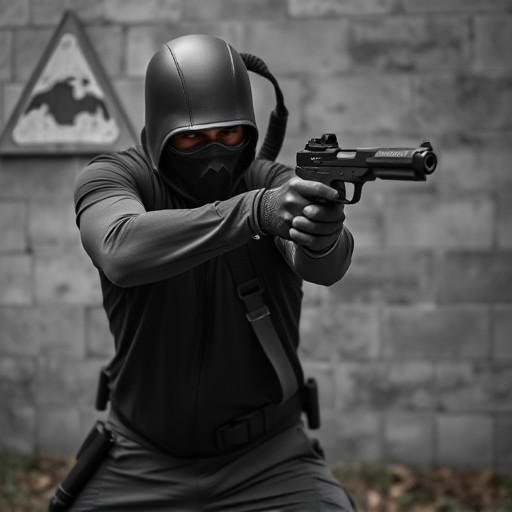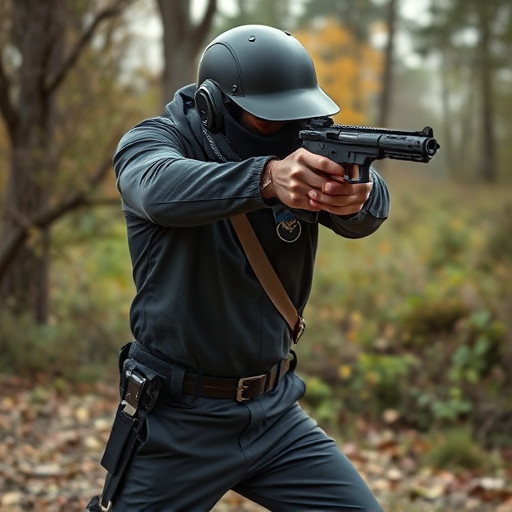Self-Defense Stun Guns: Safeguarding College Students from Accidental Discharge
Accidental discharges of self-defense stun guns on college campuses pose significant risks, highligh…….
Accidental discharges of self-defense stun guns on college campuses pose significant risks, highlighting the need for stringent safety measures and comprehensive education. To mitigate these hazards, college students should prioritize learning about device mechanics, trigger sensitivity, and safe handling practices. Advanced safety features like motion sensors, shock-activated triggers, robust locks, and easily accessible deactivation buttons are crucial. College campuses worldwide are adopting self-defense stun guns as a vital tool for student protection, along with effective training programs that emphasize responsible use and de-escalation tactics.
“Accidental discharge of firearms is a significant concern, especially in close quarters like college campuses. Understanding the causes and risks is the first step towards enhancing safety. This article explores self-defense stun guns as a tool for college students, evaluating their potential role in accidental discharge prevention. We delve into effective prevention mechanisms and safety features to look for, highlighting responsible use training for enhanced personal safety on campus. Read on to discover how these measures can contribute to a safer environment.”
- Understanding Accidental Discharge: Causes and Risks
- Self-Defense Stun Guns: A Tool for College Students
- Effective Prevention Mechanisms: Safety Features to Look For
- Training and Responsible Use: Enhancing Personal Safety on Campus
Understanding Accidental Discharge: Causes and Risks

Accidental discharge, an unintentional activation of a firearm or self-defense stun gun, poses significant risks and can have severe consequences. It is crucial to understand the underlying causes to implement effective prevention mechanisms, especially for at-risk populations like college students who may carry self-defense stun guns for personal safety. Common factors include lack of proper training, unfamiliarity with the device, mishandling, or environmental triggers such as jarring movements or unexpected vibrations.
These accidental discharges can lead to injury or even death and highlight the need for stringent safety measures. For college students considering self-defense stun guns, it is imperative to prioritize education and awareness. Understanding the device’s mechanics, trigger sensitivity, and proper handling techniques can significantly reduce the risk of accidental discharge.
Self-Defense Stun Guns: A Tool for College Students

Self-defense stun guns have emerged as a popular tool among college students looking to protect themselves in an increasingly uncertain world. These compact and easy-to-use devices offer a non-lethal means of deterring potential attackers, providing peace of mind for those navigating campus life. With the rising prevalence of personal safety concerns on university campuses, self-defense stun guns are seen as a practical solution for students who want to take control of their security.
For college students, the accessibility and effectiveness of these devices are significant advantages. They can easily fit in a backpack or purse, ensuring that they’re always within reach. Moreover, stun guns deliver a powerful electric shock that can incapacitate an assailant temporarily, allowing the user to escape and seek help. This simple yet effective mechanism has proven valuable in situations where split-second decisions matter most.
Effective Prevention Mechanisms: Safety Features to Look For

When considering self-defense stun guns for college students, understanding effective prevention mechanisms is paramount. Look for models that incorporate advanced safety features like motion sensors and shock-activated triggers. These technologies ensure the device only deploys when necessary, minimizing accidental discharges and enhancing user safety.
Additionally, seek out stun guns with robust safety locks and easy-to-access deactivation buttons. Such features provide an extra layer of protection, guaranteeing the device remains inactive until intended use. This is especially crucial in environments like dormitories or crowded campus spaces where accidental deployment could lead to unwanted outcomes.
Training and Responsible Use: Enhancing Personal Safety on Campus

College campuses across the globe are implementing innovative strategies to ensure student safety, especially with regard to personal defense. One such initiative gaining traction is the promotion of self-defense stun guns as a crucial tool for students to protect themselves in potentially dangerous situations. These compact and easily concealable devices offer an extra layer of security, empowering individuals to deter potential attackers.
Training programs play a pivotal role in enhancing their effectiveness. Workshops focused on responsible use teach students how to operate the stun guns safely and effectively, ensuring they understand the importance of de-escalation tactics before resorting to such self-defense mechanisms. By fostering a culture of awareness and preparedness, campuses can create an environment where students feel more confident and capable of handling unforeseen circumstances, ultimately contributing to a safer campus community.
Accidental discharge prevention is paramount in ensuring personal safety, especially for vulnerable populations like college students. While self-defense stun guns offer a viable option for those seeking protection, understanding and implementing robust safety mechanisms are essential. By choosing devices with advanced safety features and undergoing thorough training, students can maximize their safety on campus without inadvertently causing harm. This balanced approach combines accessible tools with responsible use, ultimately fostering a secure environment for learning and growth.


